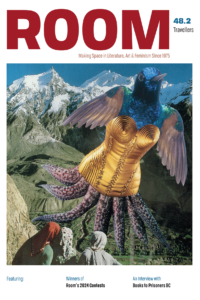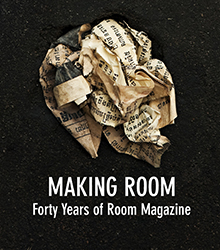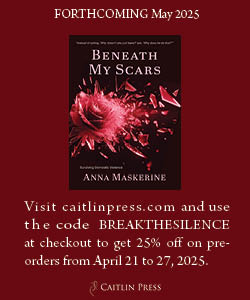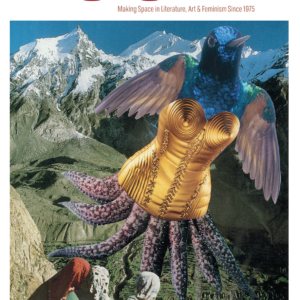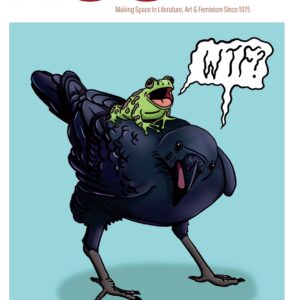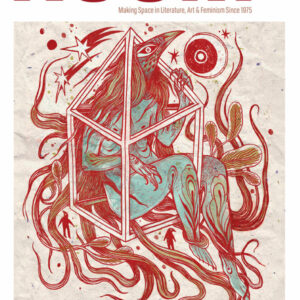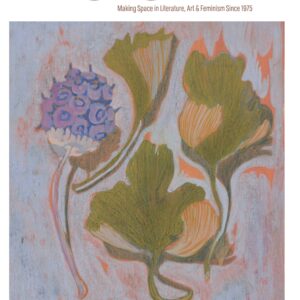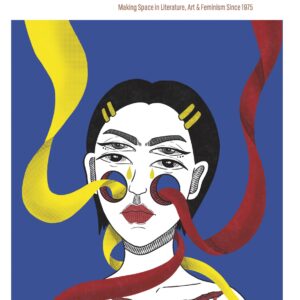“The calm lunatic—now that is something to aspire to.”—Mary Ruefle, “On Fear”
I learned to skip this year. I use a heavy, knotted rope that thwacks the ground and burns my shoulders and whips my bare toes raw when I stumble. In the early days I’d walk around with welts on my forearms, too, but the self-flagellation has waned with practice. I’ve learned to tread water, to let my feet track familiar patterns—forward and back, side to side, in and out, one to the other—freeing my mind up to notice things.
Well, “freeing” might be an overstatement.
Still, a few impressions have stuck with me. At the Y, for example, my rope draws a broad and menacing force field. Grown men cringe in its presence, sidestepping theatrically as they dart to safer ground. Sometimes I’ll get nasty looks, though I’m careful to leave more than enough room. This is another thing I’ve learned: you don’t need as much as you think. After all, I’ve skipped around people who’ll stand a metre away unflinching, people who’ll adjust to my subtle migrations (for I’m still not skilled enough to work within an entirely fixed border) with effortless accuracy.
In short, I’ve skipped around fighters. People who know where they stand.
~
Skipping ropes are to fighters what ballet classes are to football players. Go to any boxing gym and you’ll find fleet-footed dudebros elevating child’s play to the realm of Serious Sport. I like this uneasy synergy between grace and force, vulnerability and power—it makes me feel tender and curious. I like the way a fighter’s lead hand wavers, pawing the air, when he circles his opponent: endless plotlines sensed, then abandoned. Until someone commits.
“You need to find your range,” Coach tells me. “Don’t just stand right where you can get hit. Move in, move out. Find a rhythm.”
Get in, get out. Don’t linger. Go on. Writers have long been drawn to boxing—and writers of short fiction seem particularly well suited to such a pared-down sport. Still, this commitment thing is killing me.
“I can’t tell if you’re parrying or punching. If it’s a parry, don’t waste energy moving so much. If it’s a punch . . . make it a real punch!”
Hours later, bruised and morose, I open my latest story. It’s the usual miasma of tortured half-paragraphs, question marks and ellipses—all set off by an opening passage so lovingly polished I worry I’ll be forever blinded by its sheen. Writing a line, then deleting it, repeating the process twice more—only to scroll back, read over the first part, then add the same line yet again (then delete it)—I’m reminded of something else Coach once told me: “Of all my students, you are the most consistently willing to take a punch. You just keep walking through them. You never step back and breathe.”
At the time, I took this a compliment.
~
The conventional wisdom on drafting: Let it out. Be messy. Don’t fret, you can fix it later.
But I’m not alone in my premature polishing. Here’s Zadie Smith on her process:
Each floor needs to be sturdy and fully decorated with all the furniture in place
before the next is built on top of it. There’s wallpaper in the hall even if the stairs lead nowhere at all.
So—add the line, delete the line. Read over what’s there already. Get so stuck in those deep-rooted rhythms you can’t remember the meaning beneath. Worry that maybe there is no meaning: it’s all wallpaper, no wall.
I close the story, pick up my rope. Feet moving effortlessly over the whooshing blur, I consider another quote, this one from George Oppen: “Great artists are those, in the end, who do not have a failure of nerve.” I consider that Zadie Smith, who grew up in east London and writes frequently about dance, most likely knew how to skip before her late twenties. What does it feel like to open a story when you’re Zadie Smith? Do mind and body work in hard-earned tandem, a free-floating instinct machine?
I open the story again. I close it.
The problem: I don’t know if it’s a punch or a parry, either. All I can do is keep walking. Wave my gloved hands. Cringe.
~
In her essay “On Fear,” the poet Mary Ruefle imagines a conversation with a doctor and a pilot. Each describes a moment of crisis—a plummeting plane, an emergency tracheostomy—faced by retreating into hard-earned reflex: cutting the throttle and punching the dive brakes; piercing the throat while a nurse calls out plunging oxygen levels. “The only way to overcome fear,” they conclude, “is to do what you are trained to do.”
Like Ruefle, I am intrigued by straightforward danger and those who train to face it. Fumbling through kickboxing drills as Coach bellows out instructions, I think of Richard Ford’s conception, in The Sportswriter, of athletes as people “entirely within themselves,” people whose work—through its immediacy, its risk—requires “the relinquishing of doubt and ambiguity and self-inquiry.” Ford concludes that athletes, through this process of habitual embodiment, never “feel the least bit divided, or alienated, or one ounce of existential dread.” A tantalizing prospect for this agonized artiste.
But something about that supposed wholeness, in fighting, rings false to me. In solo sports it makes sense: the skier glides over a glittering blank canvas; the gymnast chalks her hands, then vaults into the unknown. And even the hive mind of a team offers a space where the self can be subsumed and thus made whole. But while a fighter might occupy any combination of these zones in training (skipping in her personal orbit, trudging through circuits with commiserating teammates), the slippery, dual awareness demanded by a fight suggests a shifting boundary, a liminal zone between self and other in which—as commentators are so fond of noting—“anything can happen.”
The lead hand wavers as though reaching for a mirage. The opponent—here anticipated, there a stunning flash—shimmers in and out of grasp.
In the end, it’s all shadow boxing.
~
Here’s my latest liminal zone: a book on boxing basics. I am reading about range.
Fights take place within a series of concentric circles. There’s close range, or the “pocket,” where neither opponent can throw a fully extended punch. This is a high-stakes zone where fists fly in tightly wound hooks and uppercuts; once in the “clinch” (think aggressive hugging), opponents can either gas out wrenching each other around or catch their breath in a slumping deadlock. Most refs frown on the latter.
Next is arm’s distance, another decisive region. And an asymmetrical one, unless the fighters have matching wingspans. (The flipside, standing just out of reach, is a luxury of the lanky). Things are more deliberate here—we’re out of the realm of “dirty boxing” and into a place where solid technique pays off: clean jabs, well-camouflaged crosses. Most people’s mental image of boxing takes place here. Energetic by nature, it’s a place where things get done.
Long range is restful, a strategic retreat. You breathe, you observe, you plan. A necessity against taller and stronger opponents, it tends to breed impatience—the crowd jeers, your target charges. It’s a place exhausted fighters may covet but can’t occupy for long. Linger here and the heat drains from even the most promising fights; you’re stuck circling listlessly, paralyzed by potential.
And so I’m wary of the advice often given to stalled writers: Put it away, come back to it later. Give yourself time, get some distance. I think of the reams of abandoned drafts languishing in my archives. I think of the perfectly matched heavyweights plodding around a ring, seeing all, accomplishing nothing. That mantra of bored refs around the world: Get busy! Come on, work!
~
The only way to overcome fear is to do what you are trained to do. Ostensibly I have been trained to write fiction, but lately I find myself drawn to earlier forms. Essays, at least in their inception, have always reminded me more of poetry than stories: associative thinking, a soothing sense of solitude. There’s confidence here, propulsion: I anticipate, strategize, follow through. Faced with a clear target, I work within arm’s reach.
Words start to pile up. Eight hundred, a thousand. After months spinning my wheels on fiction, the sense of momentum is dizzying. I’ve got a new spring in my step; I start fitting in extra workouts. After class I stick around to jog and plank and do footwork drills; I throw hundreds of punches at the air, clutching the little pink weights I used to associate with old ladies. But despite my surging fitness I’m still getting clobbered in sparring, my progress long stagnant where others have learned to slip and weave and counter.
“You have to work smart,” Coach tells me. “You can’t expect to improve if you’re just mindlessly throwing stuff. Picture shots coming at you. Don’t make it so mechanical.”
I throw a few dutiful combinations, ducking and hopping until he seems satisfied. But the instant he turns away, I find myself reaching for my rope. What is it (eight hundred hops, a thousand) that keeps me so stubbornly bound to this ritual, so trapped in this spinning microcosm of my own making? Is this essay just another kind of rope, a new tether? All those stories glimpsed, then abandoned. Have I swapped fogged windows for a hall of mirrors, the first timid steps toward progress traded for a comforting facade of motion?
“Don’t overthink it,” my partner smiles at sparring the next day, and I laugh, giddy with frustration.
~
But paradox is the lifeblood of writers and fighters alike.
Take Sheila Heti’s description of art as both “one hundred percent work and one hundred percent play,” which applies to any sport but holds particular weight in the boxing gym, where skipping ropes and hopscotch squares and little pink dumbbells prepare grizzled athletes for black eyes and broken bones. Or Jane Hirshfield’s concept of true concentration: “that particular state of awareness: penetrating, unified, and focused, yet also permeable and open” which is only possible “paradoxically—at the moment willed effort drops away.”
How do you hone such an awareness? How do you trick yourself into effortful ease?
The conventional answer is “drilling”: following set pathways until they bore their way into instinct. “Bore”—an apt word, as, in fact, is “drill,” with its shades of struggle and grit. Like that other coaching cliché, “dig deep,” “drill” suggests a downward journey, a tunnelling into the self that may be a precursor to awareness: that coveted flow state in which the world wells up from mysterious depths. If, as Hirshfield suggests, “difficulty itself may be a path toward concentration,” perhaps said path can only lead forward through this maddening descent.
Progress via stagnation: there’s a paradox for you. But in the words of David Foster Wallace: “Everything takes time. Bees have to move very fast to stay still.”
~
Recently I watched an MMA fight between a striker and a grappler. They began with predictable wariness, assessing each other at long range in a steady, plodding circle. After a few failed takedown attempts the grappler seemed discouraged, burdened further by a reach disadvantage—for the striker was lanky, her fists whipping out with liquid ease. The round continued; the commentators praised the striker’s output, her rhythm, her form. It was only a matter of time, they claimed, before she found her range.
The round ended. The grappler, untouched, returned dazedly to her corner.
It continued for three rounds: the striker throwing, the grappler somehow keeping just out of reach despite her myriad shortcomings. In many fights this sort of stalemate makes for a restless crowd, but that night the audience stayed silent—lulled, perhaps, by the striker’s inexplicable persistence. For she didn’t lose her temper, didn’t charge into the clinch; she just kept throwing those flawless, futile punches like an automaton. “She’s doing everything right,” the commentators marvelled. “She just can’t seem to connect.”
Add the line, delete the line.
~
Failures of connection, failures of nerve. My rope blurs; the words dry up. I rewrite the first line of this essay every time I open it: I started skipping, I learned how to skip, I learned to skip, I’ve been skipping. I even rewrote that list just now (put the “how” version first, or second?). If burrowing of this sort is indeed useful, please, God, let me tap the well soon; show me the light at the end of the tunnel; deliver me from mixed metaphors!
I close the essay, stare at the screen. Open another fight.
This time, two wiry welterweights dive into a grappling exchange. As is often the case in ground-based fights, they move with maddening subtlety: it might take thirty seconds for a leg to straighten, an elbow to bend. “They’re working,” the commentators insist as the crowd begins to boo—and as always, I marvel that anyone could think otherwise. For despite the slowness of the action, the fighters’ faces strain with effort; their veins bulge, their bodies pour sweat. When the round ends, they lurch to their feet with barely-concealed exhaustion.
The next nine minutes are a fighters’ fight, all tiny, hard-won adjustments: an arm pinned here, a shoulder freed there. The commentators dutifully note the techniques at play, but by round three even they seem bored; conversation wanders. I minimize the window, start browsing other sites—then click back as my headphones explode with cheers.
“There we have it, folks”—the replay comes up—“Tonight was about the long game.” I wince as a forearm crushes a throat in a flawless rear-naked choke. But already the usual transformations are taking place; the gentle flutter of the tap after endless white-knuckle holds; the medics bowing to pat and prod the felled fighter back to life; and finally my favourite, the moment all artifice shatters: the fighters weeping, kissing cheeks, their bodies held close once more.
It used to surprise me, this tenderness.
~
One morning last week I woke up to find I could barely walk. My heel was on fire; I couldn’t even bear to put on shoes. Timidly, I picked up my rope, tried a hop—then collapsed to the ground.
Sunlight poured through the window. It was the first day of spring.
Cursing my luck, I dropped out of kickboxing that evening. I hobbled around my apartment, mystified and mopey. It’s a cliché, sorrow undermined by sunlight, but there’s a reason writers return to it: there’s a potency in contradiction, a spark ignited from that messy clash between the poles.
Burning with restless energy, I sat at my laptop and let the words flow.
Those weeping, kissing fighters—I couldn’t shake them. That wincing joy. Writers often claim to hate writing and love having written; we long for that afterglow, the moment our subtle, furious toiling bears fruit. And it seems to me there is something redemptive in that struggle. After all, the familiar pivot from contempt to pleasure—the kiss after the tap-out, the last draft saved and submitted—inverts the masturbatory arc artists are often accused of: it’s a labour of love as dependent on pain as it is on pleasure. As Zadie Smith puts it:
It’s a feeling of happiness that knocks me clean out of adjectives. I think sometimes that the best reason for writing . . . is to experience those four and a half hours after you write the final word.
So yes, kill your darlings. Add the line, delete the line. But in the end, all those little deaths result in something living. A creature borne of ego and selflessness, love and hate. A shadow—tethered and free-floating—that, in the right light, bleeds.
—

